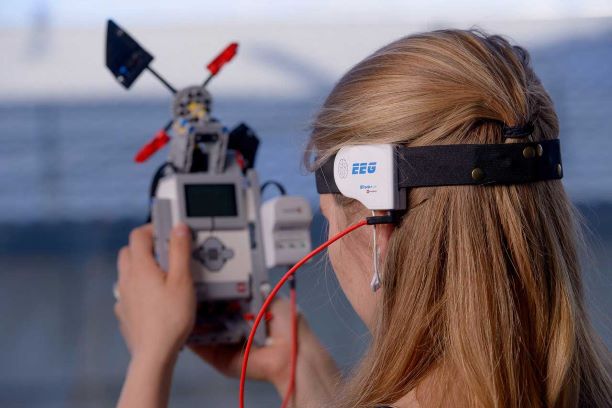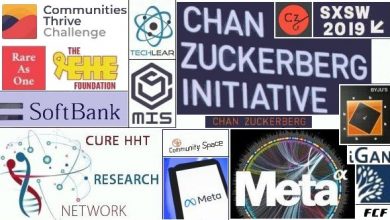
Personalization, gamification, introduction of artificial intelligence systems, use of VR/AR are the educational trends that come up as search results for the relevant request. I will not repeat those — I’ll tell you about less resonant, but no less relevant trends.
Innovative devices make inclusive learning a reality
Education in general educational institutions is gradually becoming available for people with special needs. Modern devices equalize the chances of successful education for students with different starting points.
First, technology is a medium that allows people to communicate, despite their physical specialties. For example, KinTrans startup helps the deaf to communicate with people who don’t understand sign language. The device uses the camera to track the movements of the hands and body, and then translates them into voice or text, and vice versa.
Secondly, with the help of various devices it is possible to almost completely level out physical characteristics that previously seriously hindered movement and interaction with the world. And in the long run even get an advantage!
Bionic limbs, exoskeletons, smart glasses for people with serious visual impairments — all this has long been beyond science fiction. Assistive technologies are developing very rapidly — according to forecasts by Coherent Market Insights, by 2024 this market will amount to more than $ 24 billion, which is almost 2 times more than in 2014.

Using biometrics
Fingerprint and face scanners have already become standard features of smartphones, the effectiveness of which is no doubt. But biometric data is also useful in education.
First, they simplify many administrative processes. Using fingerprint scanners on doors or cameras with face recognition, you can save time on attendance registration. In addition, collection of such data allows you to register not only the number of absences, but also the exact time of absence of the student. With this information, the teacher will understand what material each student missed.
Secondly, collecting biometrics improves quality of learning. Using cameras with artificial intelligence, you can track indicators such as eye contact, body language, and interactions with other students. Analyzing these data using Big Data, we can draw conclusions about the student’s involvement in the lesson and, accordingly, personalize the approach to more effectively achieve learning goals.
Neuroeducation
Neuro education is a direction in training, which uses the latest achievements in the field of neuroscience, cognitive psychology and neurology. That is, in order to make education more effective, knowledge is applied about how a person learns, what processes occur at that time in the brain and what affects it. Developments in this direction also help to identify and eliminate the causes of poor performance.
For example, the Russian online educational platform CogniFit is capable of assessing the level of development of cognitive functions responsible for learning, such as attention, memory, perception, and thinking. To do this, a student needs to pass a test, after which the platform develops a personal training program aimed at improving neurocognitive abilities. With the help of such trainings, it is possible to increase learning ability even in children with attention deficit and hyperactivity disorder.
In the framework of neuro education, children also become active participants in the study of neuroscience and human-machine interaction. So, the Russian BiTronics Lab project offers training and prototyping courses based on the “Young Neuro modelist” design kits, with which you can study human bio-signals and create neural interfaces in practice. This knowledge is useful both for creating innovative devices and for understanding the structure of your own brain, which also makes learning more productive.

Integration of education in social networks and instant messengers
According to Statista, in 2019, an average person spends 144 minutes a day on social networks. The modern user is attracted by easy-to-understand, broken up in small portions, mainly visual content. Educational institutions are beginning to realize that Facebook, Twitter, Youtube, Instagram are not competitors, but tools, and naturally adapt to the preferences of the audience, penetrating more and more into social networks.
It is possible that in the future educational platforms will become part of social networks. According to a Pearson study, in 2018, 59% of respondents from Generation Z already considered Youtube a favorite educational platform.
Already now, social networks are used for posting important information, such as class schedules and homework. With their help, live broadcasts and competitions are held. Many educational institutions maintain profiles on social networks to increase emotional involvement of students. For example, the University of Notre Dame maintains a picturesque Instagram account — @notredame, to which more than 150 thousand people are subscribed.
5G will make ability to search for information a sign of erudition, and “learning of the future” will become a routine
The ubiquity of high-speed Internet will lead to a boom in IoT, VR/AR/MR, which has slowly but surely have been developing for the last few years. The introduction of the technology will lead to the digital revolution 2.0, similar to the one happened with the advent of the Internet in the early 90s.
With the Internet speed of 20 Gbit/s, devices will work on the principle of “always online”, which will force us to reconsider the very concept of learning aimed at remembering. The vector of the educational system should be replaced by the ability to work with information and effectively use all kinds of IoT devices.
Thanks to the high speed of data transfer, lectures in real time that are read by a teacher’s hologram will become commonplace. And for students, it will be the norm to simply put on a VR helmet from home and become witnesses of historical events, visit protected areas and transfer to other planets.
Instead of a conclusion: what awaits education during the technological singularity?
Technological innovations will definitely affect the very essence and goals of training. During an overabundance of information and opportunities, the ability to search for information, formulate thoughts and requests will play a key role. Already, it will not be superfluous for many to take the free Power Searching with Google course, which offers advanced search engine techniques.
Since most of the routine work will be automated, people will have to find new directions for the development and maintenance of a comfortable life, based on the collective values of humanity. Therefore, education will more likely contribute to the formation of humanistic values, empathy and creativity.
Of course, such an idealistic scenario is possible provided that there are no serious military conflicts and there is availability of education for everyone, thanks to the support of states and non-profit organizations.











